List of Common Cement applications:
| Cement Uses | Description of Uses |
|---|---|
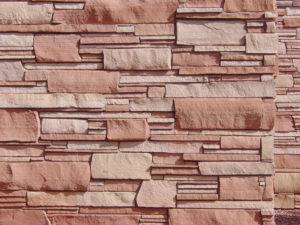 |
Masonry is the building of structures from individual units laid in and bound together by mortar; the term masonry can also refer to the units themselves. The common materials of masonry construction are brick, building stone such as marble, granite, travertine, and limestone, cast stone, concrete block, glass block, and cob. Masonry is generally a highly durable form of construction. However, the materials used, the quality of the mortar and workmanship, and the pattern in which the units are assembled can significantly affect the durability of the overall masonry construction. A person who constructs masonry is called a mason or bricklayer. |
 |
Plasterwork refers to construction or ornamentation done with plaster, such as a layer of plaster on an interior or exterior wall structure, or plaster decorative moldings on ceilings or walls. This is also sometimes called pargeting. The process of creating plasterwork, called plastering or rendering, has been used in building construction for centuries. For the art history of three-dimensional plaster, see stucco. |
 |
Pipe Joint a cement (as a mixture of red lead with linseed oil in a thick paste) for making a pipe joint impervious to leakage |
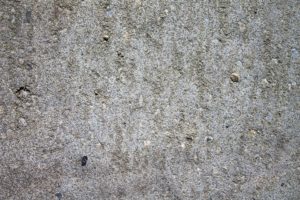 |
Concrete is a composite material composed of coarse aggregate bonded together with a fluid cement which hardens over time. Most concretes used are lime-based concretes such as Portland cement concrete or concretes made with other hydraulic cements, such as ciment fondu. However, road surfaces are also a type of concrete, asphalt concrete, where the cement material is bitumen, and polymer concretes are sometimes used where the cementing material is a polymer. |
 |
Flooring is the general term for a permanent covering of a floor, or for the work of installing such a floor covering.interchangeably but floor covering refers more to loose-laid materials. Also concrete beams, stairs pillars, etc. |
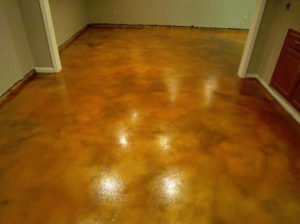 |
Protection for weather errosion |
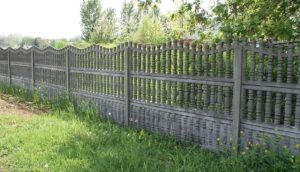 |
Precast pipe manufacturing, piles, fencing posts, etc. |
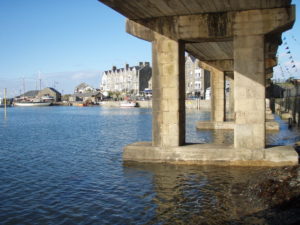 |
A bridge is a structure built to span physical obstacles without closing the way underneath such as a body of water, valley, or road, for the purpose of providing passage over the obstacle. There are many different designs that each serve a particular purpose and apply to different situations. Designs of bridges vary depending on the function of the bridge, the nature of the terrain where the bridge is constructed and anchored, the material used to make it, and the funds available to build it. |
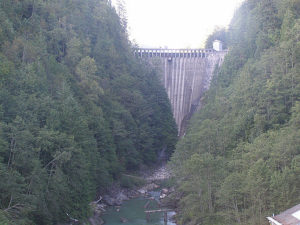 |
A dam is a barrier that impounds water or underground streams. Reservoirs created by dams not only suppress floods but also provide water for such activities as irrigation, human consumption, industrial use, aquaculture, and navigability. Hydropower is often used in conjunction with dams to generate electricity. A dam can also be used to collect water or for storage of water which can be evenly distributed between locations. Dams generally serve the primary purpose of retaining water, while other structures such as floodgates or levees (also known as dikes) are used to manage or prevent water flow into specific land regions. |
 |
A tunnel is an underground or underwater passageway, dug through the surrounding soil/earth/rock and enclosed except for entrance and exit, commonly at each end. A pipeline is not a tunnel, though some recent tunnels have used immersed tube construction techniques rather than traditional tunnel boring methods. |
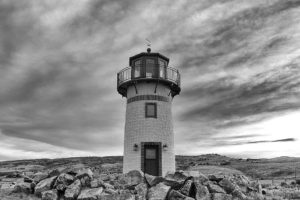 |
A lighthouse is a tower, building, or other type of structure designed to emit light from a system of lamps and lenses and used as a navigational aid for maritime pilots at sea or on inland waterways. |
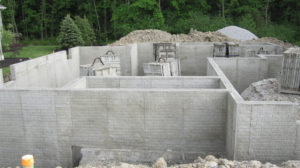 |
A foundation is usually stone or concrete structure that supports a building from underneath |
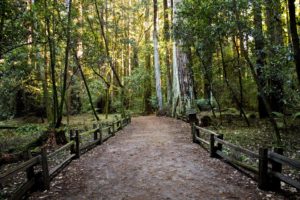 |
A footpath (also pedestrian way, walking trail, nature trail) is a type of thoroughfare that is intended for use only by pedestrians and not other forms of traffic such as motorized vehicles, cycles, and horses. They can be found in a wide variety of places, from the centre of cities, to farmland, to narrow mountain ridges. Urban footpaths are usually paved, may have steps, and can be called alleys, lanes, steps, etc. |
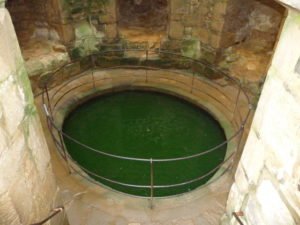 |
A well is a hole drilled or bored into the earth to obtain water, petroleum, natural gas, brine, or sulfur. |
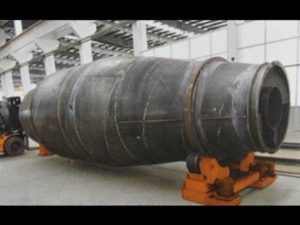 |
A watertight tank is air sealed for water and other liquids |
 |
A road is a thoroughfare, route, or way on land between two places that has been paved or otherwise improved to allow travel by foot or some form of conveyance, including a horse, cart, bicycle, or motor vehicle. |
 |
Architecture is both the process and the product of planning, designing, and constructing buildings and other physical structures. Architectural works, in the material form of buildings, are often perceived as cultural symbols and as works of art. Historical civilizations are often identified with their surviving architectural achievements. |
